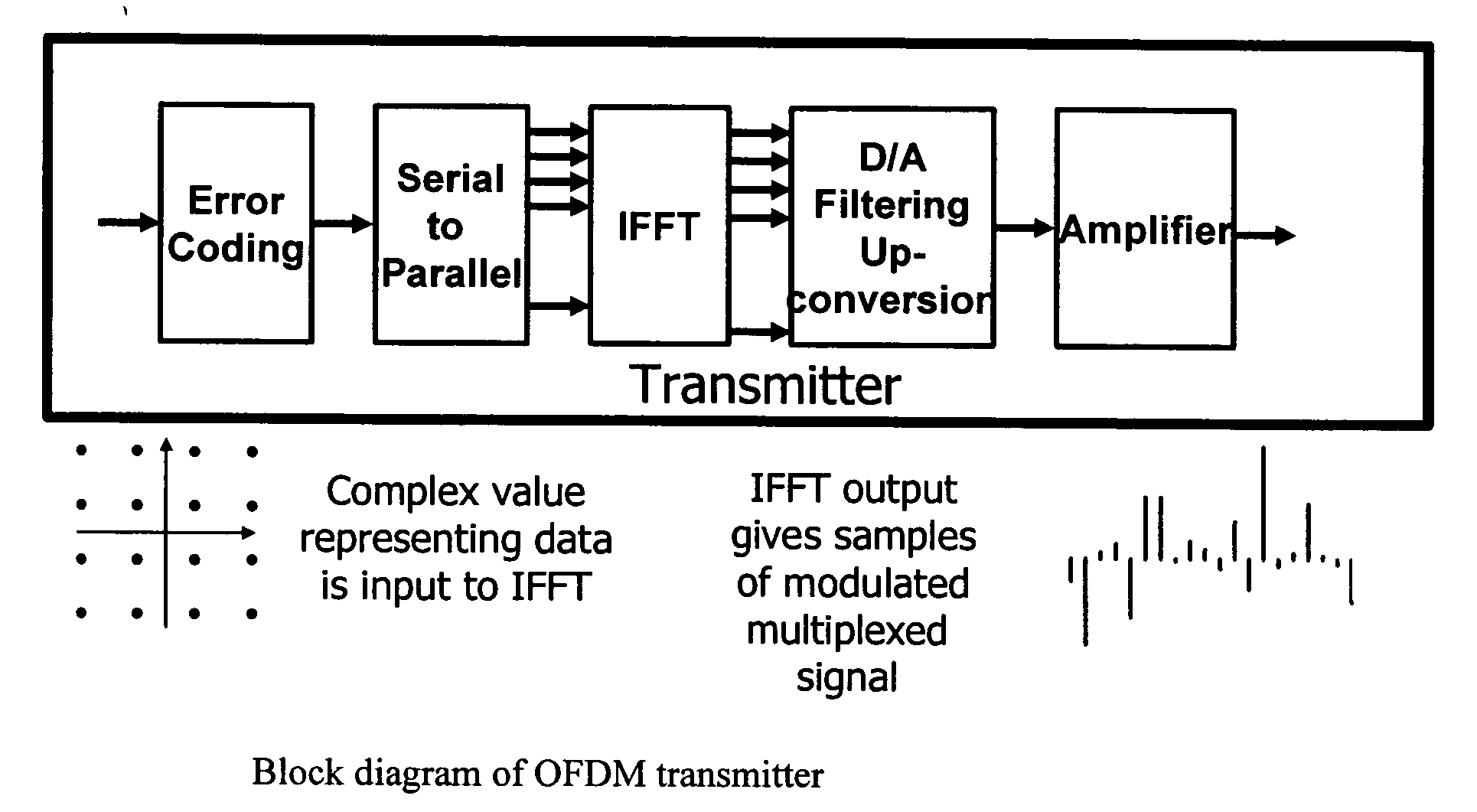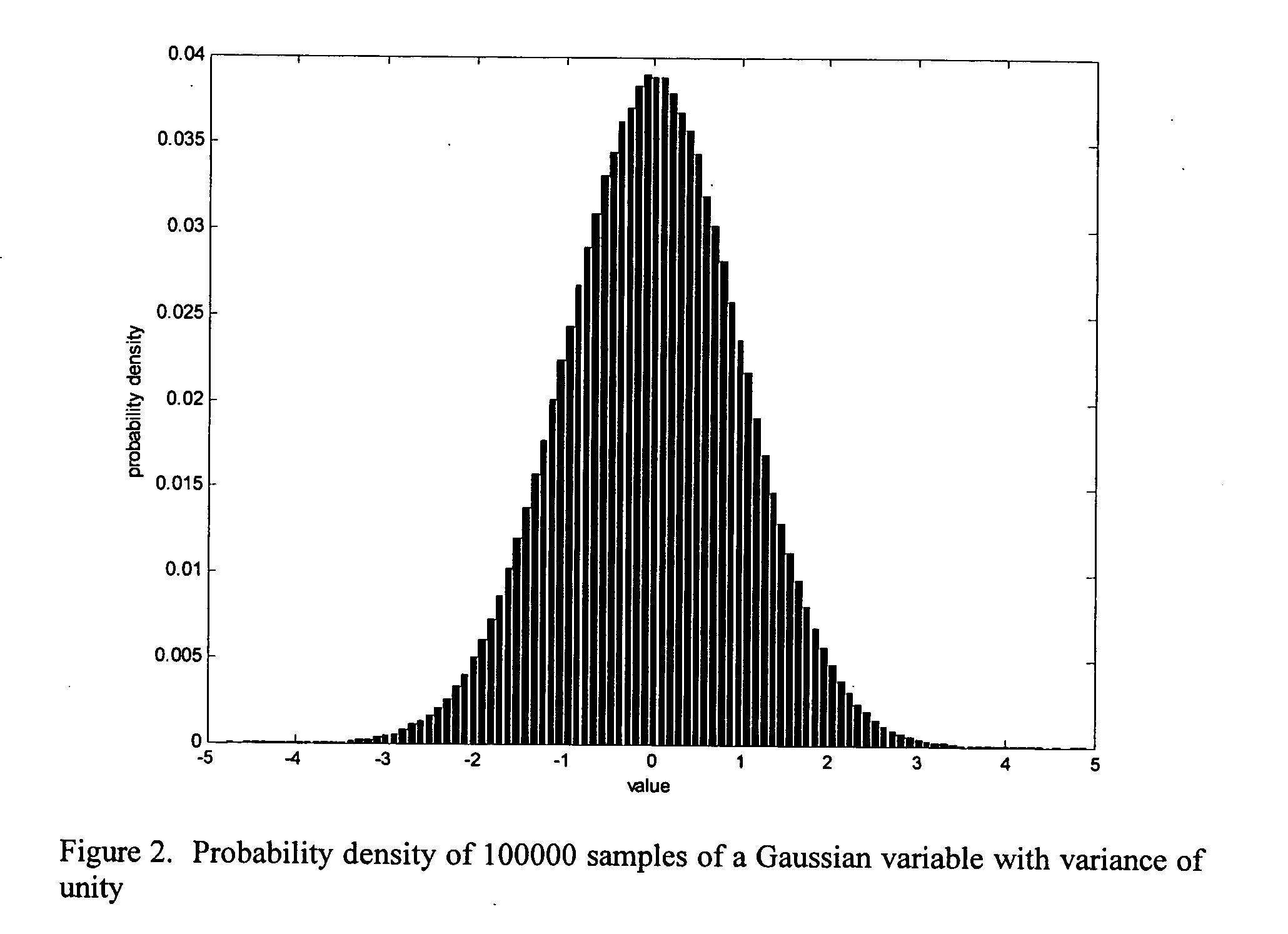Multicarrier modulation systems
a multi-carrier, modulation system technology, applied in modulated-carrier systems, transmission, complex mathematical operations, etc., can solve the problems of limited dynamic range of fixed-point systems, limitation of the practical implementation of multi-carrier modulation systems, and account for limitations due to arithmetic processing, etc., to achieve the effect of minimizing degradation
- Summary
- Abstract
- Description
- Claims
- Application Information
AI Technical Summary
Benefits of technology
Problems solved by technology
Method used
Image
Examples
Embodiment Construction
[0073] Embodiments of the invention are described in relation to orthogonal frequency division multiplexing (OFDM) systems, which are a particularly popular type of multicarrier system in which discrete Fourier transforms are used to perform modulation and demodulation.
[0074] In order to understand and analyze the new technique, background information is required on a number of different topics. These are: [0075] i. Signal characteristics [0076] ii. OFDM, and in particular the effects of noise in OFDM; [0077] iii. FFT structures and fixed-point implementation and the effect of limited arithmetic precision; [0078] iv. the statistics of signals within the IFFT / FFT in OFDM; [0079] v. and the quantization of Gaussian signals.
[0080] This background is given in the following description and simulation results are presented for the new technique and compared with the results for conventional techniques. The practical implementation of the new technique on a fixed-point DSP is also presen...
PUM
 Login to View More
Login to View More Abstract
Description
Claims
Application Information
 Login to View More
Login to View More - R&D
- Intellectual Property
- Life Sciences
- Materials
- Tech Scout
- Unparalleled Data Quality
- Higher Quality Content
- 60% Fewer Hallucinations
Browse by: Latest US Patents, China's latest patents, Technical Efficacy Thesaurus, Application Domain, Technology Topic, Popular Technical Reports.
© 2025 PatSnap. All rights reserved.Legal|Privacy policy|Modern Slavery Act Transparency Statement|Sitemap|About US| Contact US: help@patsnap.com



